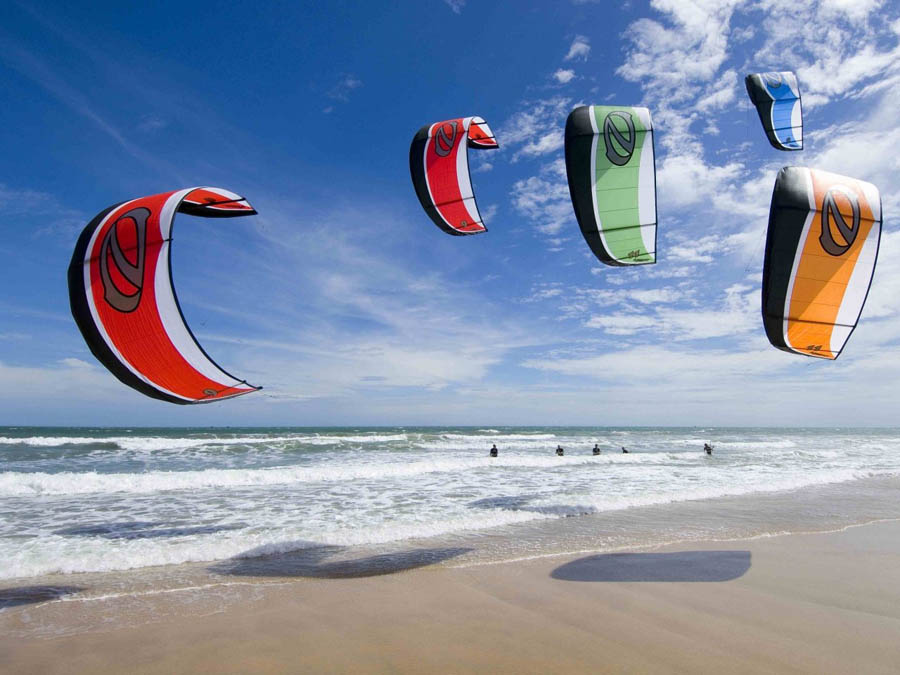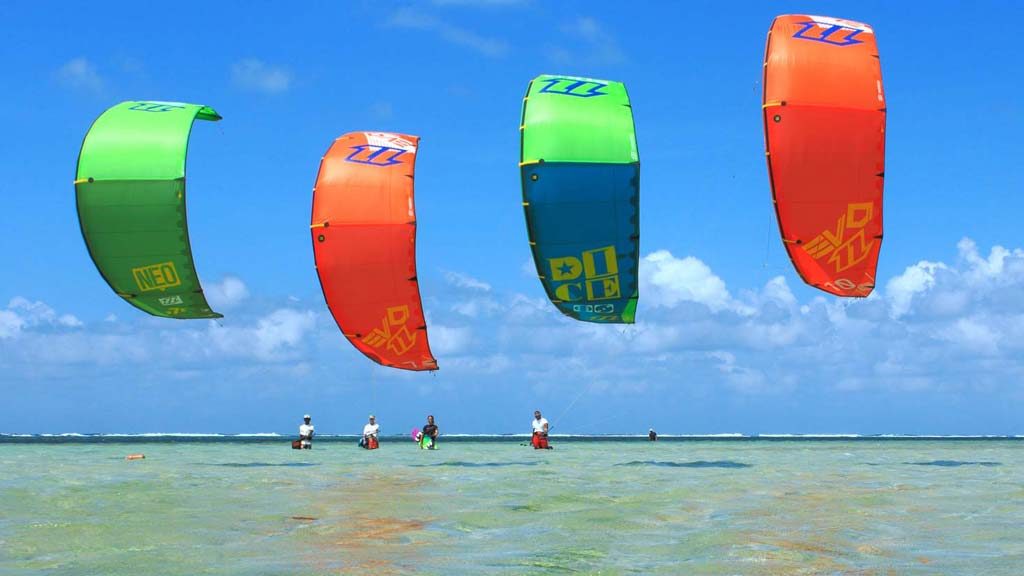

How do you make sure your expensive new kitesurfing kite doesn’t fall apart after 5 sessions? By following these few simple guidelines you can increase the lifetime of your kite and get so much more value for your money.
Ironically enough the 3 main things you need to avoid with your kite are sun, wind and sand!
Now I know that avoiding the last 2 of those is pretty much impossible, unless you live in the UK in which case avoiding the sun is very easy!
Why Kites Aren’t Sun Worshippers
UV from the sun will damage the kite as it damages most materials. If you live in a warm climate this is however pretty much unavoidable. In a cruel twist of irony the wind will also damage the kite. This is especially true when the kite is left sat on the beach flapping in the wind.
Ever seen a flag that’s been flying too long, all frayed at the end?
That’s exactly what the winds doing to your kite. The best way to avoid both the wind and the sun is to put the kite back in the bag if you intend to leave it on the beach for any length of time.
The Biggest Kite Killer
The biggest kite killer however is sand. Sand will work its way into and rub against the material and the stitching of your kite, weakening both and in time leading to tears and breakages. The best way to avoid this is to clean your kite thoroughly as you put it away, brushing all the sand off the kite as you pack it down.

Wet Kite?
If the kite is wet or damp when you put it away it’s not always possible to get all (or indeed any!) of the sand off, in this case the kite should be cleaned at the first opportunity.
Another real kite killer is the heat. When kites are left in a car or in a warm place in the sun the glue that holds the valves onto the bladders will often melt.
Leaving you with small holes where the valve has come unattached from the bladder and through which air can escape. Meaning that the next time you come to inflate your kite you find it mysteriously has a very slow puncture which is very difficult to locate. Avoid this by storing the kite in a cool dry place.
The Debate Rattles On
There is a lot of debate about as to whether you should clean your kite in freshwater once you’ve finished a session on the sea. Some people believe you should thoroughly wash your kite down in fresh water as this removes the salt which can have a similar effect to sand.
Others suggest that the salt actually preserves the kite and stops it from rotting and gathering mould especially if you are planning to leave the kite in storage for a long time, ie. over the winter. I personally don’t rinse my kites down after use and while I use this excuse if I’m honest with myself it’s probably just laziness!!
I think a lot of people forget how important it is to care for your sports equipment especially something that consists mostly of fabric material because it can easily deteriorate. I remember the first kitesurfing kite and it was destroyed before I knew it. The fabric was just absolutely torn to shreds. Ever since, I have made it a point to clean and put my kite away right after using it and making sure to be careful where I store it.
Great info, thanks buddy!
No worries mate…hope life’s treating you well these days!
Another great article Sam, but not a single mention of falling over with the kite when walking home with the kite on your back via the pub or using it as a picnic blanket.
Haha…you could also use it as a shelter if when walking back from the pub you were far too drunk to make it all the way home!!!